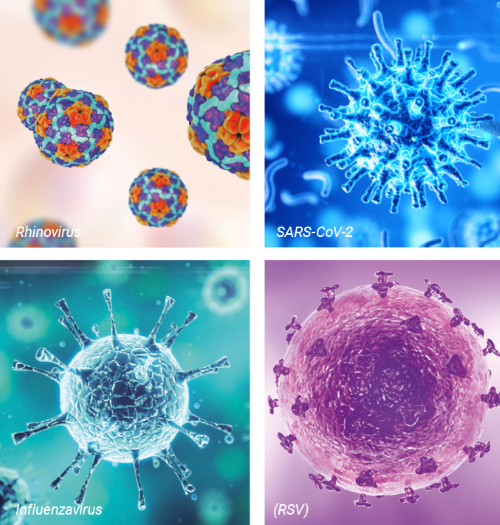Modes of Transmission


As soon as temperatures fall and people spend more time indoors again, the number of acute respiratory diseases increases. During the COVID-19 pandemic, this trend was interrupted by protective measures such as wearing masks and keeping a distance, so that the typical respiratory pathogens were less able to spread or their occurrence was shifted seasonally [1, 2]. Many people are therefore wondering what to expect in the current or upcoming cold season, which is expected to take place without any protective measures.
According to the European Centre for Disease Prevention and Control (ECDC), an increase in acute respiratory diseases including COVID-19 in 5% to 29.5% of cases has been observed in several European countries since the end of summer and beginning of autumn [3]. Experts agree that the coming autumn/winter season will once again be accompanied by high numbers of respiratory diseases and that COVID-19 will again play a significantly greater role than in the summer months [4]. This is because respiratory pathogens have better transmission conditions in the cold season [5].
To avoid infecting anyone when having signs of an acute respiratory infection, one should generally stay at home for a few days until the symptoms have largely subsided. In addition, masks are still considered a good way to protect yourself and others – especially when it comes to people at increased risk. Good hand hygiene and covering the mouth and nose with a tissue or the elbow when coughing and sneezing are also part of effective infection prevention [6, 7]. If recovery does not occur as expected, it is advisable to visit a doctor. In addition, vaccinations against COVID-19, influenza and pneumococci should be refreshed in accordance with official recommendations. This is particularly true for vulnerable groups such as elderly people and people with underlying health conditions as well as people who are exposed to a high occupational risk of infection or who have contact with people at risk [7, 8].

Sources: